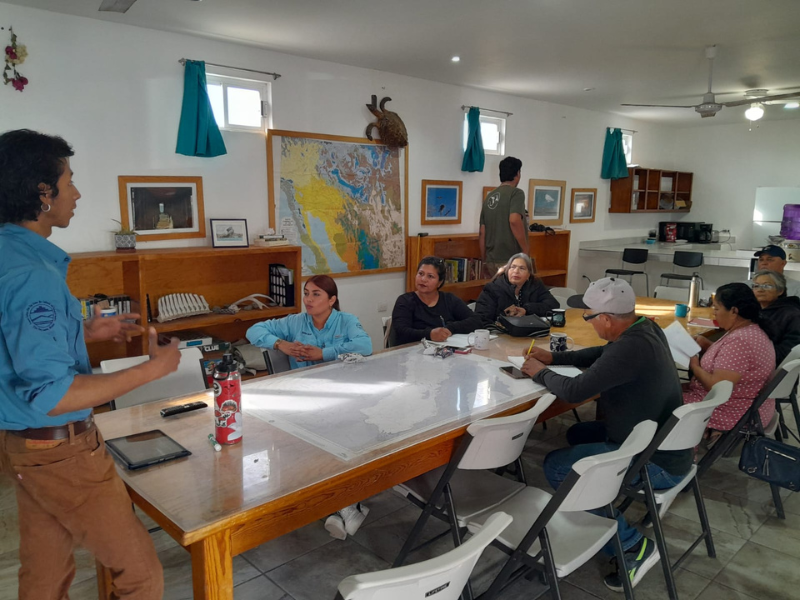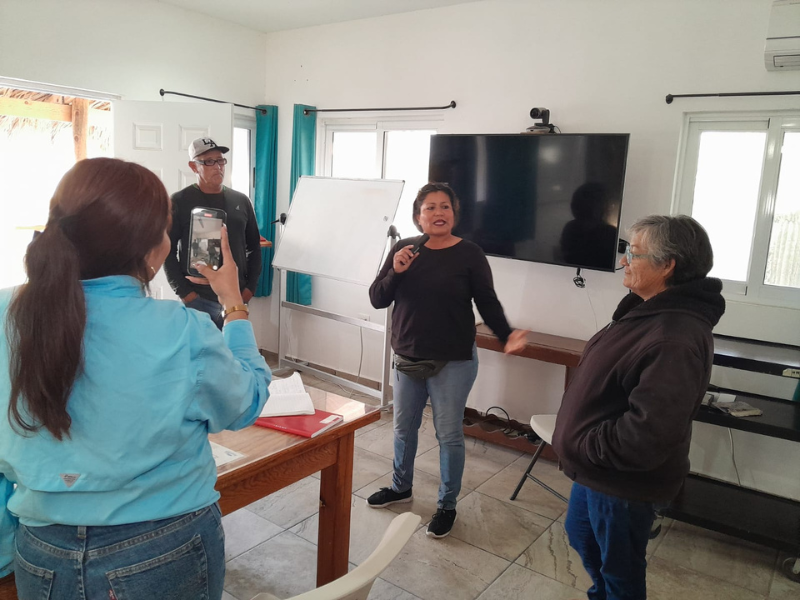Protecting Critical Habitat at Laguna La Cruz through Community-Led Outreach and Education
MSP+ Science to action 2024-2025

This project builds on more than 20 years of conservation work at the Ramsar site Laguna La Cruz, located in Bahía de Kino, Sonora, Mexico, a critical habitat for migratory shorebirds. In response to increasing threats from unregulated tourism and fishing, community leaders in Bahía de Kino identified an urgent need: to create accessible, engaging educational materials that raise awareness among visitors and residents about the estuary’s ecological importance.
This led to the idea of an interpretive trail, a visual and participatory tool that weaves together science, education, and community-based communication. The communication activities are being co-created by local conservation groups in Bahía de Kino to influence behavior and promote habitat stewardship.
The trail posters highlight the estuary’s ecological value while incorporating the voices of those who protect it, becoming a powerful educational tool for strengthening local environmental awareness.
MSP+ Makes a Difference by Merging Science and Communication for Conservation
The MSP+ program supported this initiative by funding the project’s first phase in 2023–2024, during which critical habitat maps for migratory shorebirds were developed and priority actions were identified in collaboration with community groups. This partnership helped strengthen local relationships, generated key scientific and community-based knowledge, and laid a solid foundation for developing communication strategies.
The added value was the integration of technical knowledge with the active participation of community leaders, an approach that enhanced local capacity and created momentum for ongoing conservation and awareness-raising efforts.

Inspiring results, messages that travel far
“The enthusiasm and commitment shown by participants confirm that when communities lead communication efforts, the message travels farther and lands stronger.”
- Technical reports were translated into interpretive posters, using clear language and engaging visual design.
- Community leaders were trained in communications through hands-on workshops focused on message development, speaking on camera, and producing their own videos.
- Videos were produced featuring local testimonies about estuary conservation.
- Participants learned how to structure messages, speak confidently on camera, and use basic editing tools.
- The posters and videos have become powerful educational tools that amplify the voices of those who protect the estuary.
- Not only does this project raise local environmental awareness, but it also builds communication skills among community leaders, strengthening their participation and leadership in conservation actions.
A key lesson: Individual video recordings proved more effective than group sessions, resulting in better outcomes and greater comfort for participants.

What’s Next: opportunities to multiply impact
The next step is to use the materials developed for the interpretive trail as active educational tools at Laguna La Cruz. With additional funding, we aim to:
- Expand this experience to the Infiernillo Channel, in collaboration with the Indigenous Comcaac community.
- Continue supporting community groups in Sonora to implement habitat restoration and protection actions in key areas.
Replicating Key Lessons Learned:
- Combining science and communication strengthens conservation.
- Community participation fosters ownership and sustainability.
- Training in communication not only spreads the message, it empowers.
To learn more about this project
Prescott College Kino Bay Center
Ana Martínez: ana.martinez@prescott.edu
Lorayne Meltzer: lmeltzer@prescott.edu

